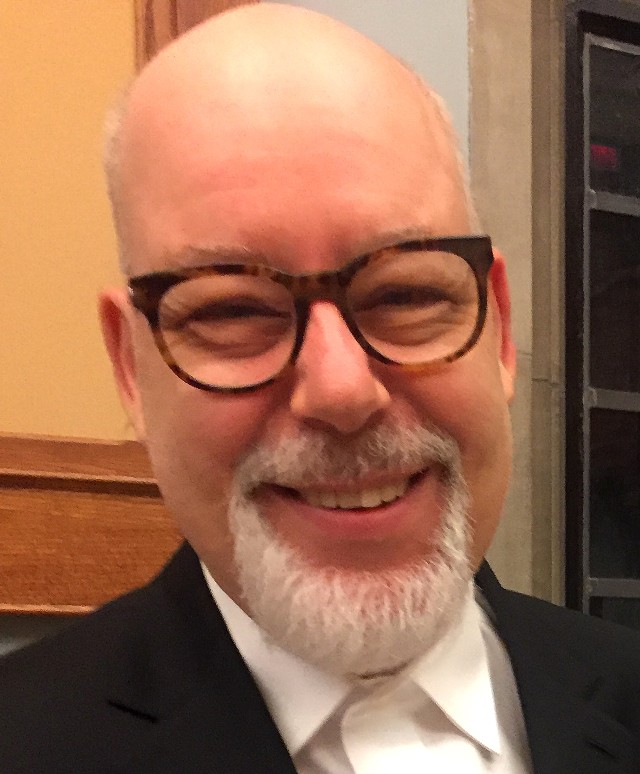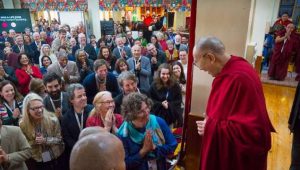
Where do my rights end and those of my neighbour begin? How can we work together? What is the Common Good?
These are questions that have driven humanity since time immemorial. What has changed in our lifetime is that we see ourselves asking those questions within a larger context extending beyond humanity.
Over the past few weeks, we Canadians have been sickened to learn more about how more than 150,000 indigenous children were taken from their parents, forced into “residential schools” where they endured systematic cruelty, abuse, and cultural and linguistic genocide, and—in the case of approximately 4,000 who died at these schools—were unceremoniously dumped in unmarked graves. It was a system that ran for more than 160 years, with the complicity of the Canadian government and various churches, all of which—except the Catholic Church—have offered apologies and sought “truth and reconciliation.”
I spent Canada Day last month reading the Truth and Reconciliation Commission of Canada’s (TRC; formed 2008, dissolved 2015) 94 Calls to Action, and the United Nations Declaration of the Rights of Indigenous People, which the TRC document cites. There was nothing in either document that seemed inappropriate—they are clear statements of the lofty goals to which we humans aspire. Our failure to live up to those goals, however, is another matter.
In “Truth and Reconciliation Commission of Canada: Calls to Action,” one paragraph in particular jumped out at me:
We call upon all religious denominations and faith groups who have not already done so to repudiate concepts used to justify European sovereignty over Indigenous lands and peoples, such as the Doctrine of Discovery and terra nullius. (Truth and Reconciliation Commission of Canada)
I was surprised, however, to find no mention of environmental integrity in the TRC’s 94 Calls to Action, and hardly any in the UN declaration. I wondered if there was a correspondingly lofty aspiration for the life of the planet somewhere that I hadn’t seen. A bit of research led me to the Universal Declaration of the Rights of Mother Earth from the World People’s Conference on Climate Change and the Rights of Mother Earth, Cochabamba, Bolivia, 22 April—Earth Day 2010.*

As if genocide were not enough of an assault on humanity, wildfires all across western North America and floods in Europe and Asia have also beset us while the pandemic rages.
I’ve been thinking a lot about the future recently and that notion of terra nullius. In the context of the questions quoted at the beginning of this piece, we find ourselves entirely interdependent with all living beings and indeed the land, sea, and air. Everything there intimately affects here.
In his 2013 book Hyperobjects: Philosophy and Ecology After the End of the World (University of Minnesota Press 2013), Timothy Morton introduces us to things that are so spatially, systemically, and temporally vast that they are cognitively almost incomprehensible, yet they impinge intimately on us at every moment. His examples include the climate crisis, plastics, and plutonium.
These are super wicked problems. We must solve them, but we keep doubling down on creating them. The causes and solutions are complex and multidimensional. There is no central authority and nation-states seem incapable of mounting global responses.
Now that hyperobjects have entered our consciousness, there is no escaping them. We understand that there is no “away,” no “nature,” and no “world” as blank terra nullius upon which our human drama limitlessly plays out, like a steady-state backdrop. We can no longer simply consider the planet as a free stockpile of raw materials, nor turn a blind eye to the suffering our addiction to growth and consumption inflicts on others and consequently on ourselves. It is innocence lost.
A big part of our difficulty in coming to terms with hyperobjects is their vastly futural temporal scale. We’re not great at long-term thinking—even the North American indigenous teaching of Seven Generations is hard to embrace.

So what might a Buddhist perspective contribute to this discourse? And, equally importantly, what might we Buddhist practitioners learn from it?
Contemporary Buddhism seems stuck in addressing suffering within the context of a very short time span—this lifetime—and a naïve assumption that the way we live now is a reliably static backdrop. The conversation revolves around self-liberation—an oxymoron if ever there was one—in spite of the Mahayana’s professed goal of liberating limitless sentient beings. This narrow focus on individual psychological well-being, intersectional identity, and mindfulness moments seems profoundly wrong to me.
What about the 6.75 trillion humans who may be born on this planet over the next 50,000 years? What about the planet’s other inhabitants, on whose well-being we also depend? If we want them to be free from suffering, we’ll need to leave them more than books and webinars on how to be in the moment.
For example, the environmental purity of the Tibetan Plateau is critical to the well-being of billions of people living in the watersheds of the great Asian rivers that arise in the Himalayan mountains. China’s environmental policies in Tibet and its quest for regional hegemony are seriously undermining that future. Did you know that ecologists and activists are working to include the crisis on the Tibetan Plateau, the world’s Third Pole, on the agenda at COP26 in November 2021 in Glasgow?
Of course, you may well argue that our planetary goose is already well cooked, given humanity’s hubris and inertia. Maybe, but now that we’ve heard the big wake-up call, what do we do? How do we act as good ancestors?
When we Buddhists refer to the Buddhas of the Ten Directions and the Three Times, we tend to think of the Three Times in rather poetic terms. We talk about the future, but we don’t really delve into the implications. Maitreya is a romantic but otherworldly avatar. Still, we can draw great energy from embracing Maitreya’s mythic presence. But we need to be teaching the Buddhism of the future, not the past.
Morton and Krznaric are not the only futurists around. Edward Burtynsky, Yuval Harari, and Stewart Brand—creator of the Whole Earth Catalogue and founder and CEO of The Long Now Foundation—also have transformative messages to convey. Even Wired magazine, with its techno-utopian optimism, has something to say about the Anthropocene. Still, I wonder: what is it going to take to motivate great numbers of us to abandon our sick narcissism and embrace our interbeing with Planet Earth? We can’t all send ourselves into space like billionaires. I am literally dying to hear more about Buddhist teachers who have captivated the public imagination in the prognostication business and who are providing inspiring roadmaps to a sustainable future.
In his book,The Good Ancestor: How to Think Long-Term in a Short-Term World (The Experiment 2020), Roman Krznaric tackles this problem of our relationship and responsibility to future inhabitants of Earth.
There is no doubt that the Dharma holds a treasure trove of insight into human psychology and the fundamental mindset essential for a healthy community. The Dharma also reveals to us the ever-evolving nature of reality, the dynamic interplay between our intentions and actions, and their complex consequences. We are admittedly terrible at strategic foresight—as any brief review of history will tell you—nevertheless we recognize the need to continue the process.
It’s not a single message or a single path, as I recently learned from the 50+ year longitudinal study known as the Six Dimensions Model of National Culture. We must not assume that our local interpretation of, and response to, the Anthropocene will hold true for all places. When His Holiness the Dalai Lama talks about universal responsibility, that doesn’t mean everyone must adhere to a particular codified set of eternal holy laws. We each need to identify local issues and find local solutions, harnessing our individual strengths, even in our globalized world.
In all Buddhist lineages, there is much reverence for ancestors, the teachers and community leaders who cut new paths into uncharted territory. How do we repay their kindness? How do we pay it forward? How do we become Good Ancestors?
These days, I have been particularly inspired by the work being done by several European communities in this Green Buddhist path. They don’t necessarily call themselves Buddhist, but what they say seems a lot deeper than much of the current American Buddhist discourse, at least from my perspective. In each case, their mission statement focuses on the deep cultural transformations we humans need to make to assure a viable future. The narratives they weave are mythic and universal, speaking to 84,000 types of listeners. As Shakyamuni advised, check them out for yourself and see if what they say makes sense to you.
* Universal Declaration of Rights of Mother Earth (Global Alliance for the Rights of Nature)
See more
Truth and Reconciliation Commission of Canada: Calls to Action (Truth and Reconciliation Commission of Canada)
Emergence Magazine
The Dark Mountain Manifesto
Life Itself
Untitled Community
Ecology Without Nature (Blogspot)
The Good Ancestor (Roman Krznaric)
This Fragile Planet: His Holiness the Dalai Lama on Environment (Sumeru Press)
Yuval Noah Harari
The Long Now Foundation
Geert Hofstede
Related features from Buddhistdoor Global
No Poverty: The Sustainable Development Goals and Buddhism
Environmental Warriors: Buddhist Eco-monks and Tree Ordination
An Interview with Ron Epstein on Responsible Living: Explorations in Applied Buddhist Ethics—Animals, Environment, GMOs, Digital Media
Climate Justice – Activating Compassion for Peoples, Wildlife, and Our Environment
Rethinking Death with Natural Burial Practices
The Greatest Gift: “For Our Long-lasting Benefit and Happiness”
SGI and Environmental Care: Nurturing Bodhisattvas Who Will Help Save the Planet
Buddhistdoor Global Special Issue 2021: Humanity in Transition














